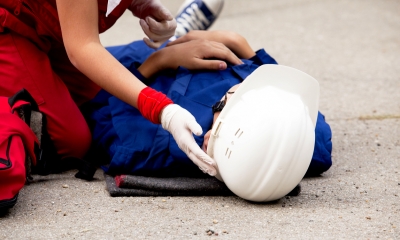
Carrying out a health and safety risk assessment is the most critical part of managing health and safety. The risk assessment helps you identify - and control - the main health and safety risks in your business.
Health and safety risk assessment requirements
Unless you are genuinely self-employed and your work poses no risks to others, your business must carry out a suitable health and safety risk assessment. You must keep a written record of your risk assessment, unless you employ fewer than five people.
For most businesses, a health and safety risk assessment is relatively straightforward. However, you may need external help for any specific hazards that need special expertise to evaluate and control.
Every business also needs to carry out a fire risk assessment. It makes sense to combine this with your health and safety risk assessment. You'll need to review the risk assessments periodically or when circumstances change.
Identifying health and safety hazards
Identifying hazards is the first step in carrying out a health and safety risk assessment. Look around your premises, ask employees and suppliers, and check records of any health and safety incidents. Typical hazards include potential causes of accidents (such as trailing wires) or long-term health problems (such as poorly-designed workstations) as well as obvious hazards such as machinery, dangerous substances and so on.
At the same time, you need to consider who could be affected by the hazard. Bear in mind the extra risks to people who are not familiar with your premises or are particularly vulnerable.
In each case, evaluate the scale of the risk and how effective any existing precautions are. As a minimum, you should be complying with any specific health and safety regulations and meeting industry norms.
Controlling health and safety risks
It may be possible to eliminate hazards altogether for example, by replacing dangerous machinery with an alternative.
Remaining health and safety risks can often be controlled with appropriate health and safety procedures, backed up by training. You may also be able to reduce health and safety risks by preventing or minimising employees' exposure to hazards: for example, by using guard rails to prevent falls from height, or by ensuring hazardous substances are stored securely. Health and safety risks can be further reduced through the use of personal protective equipment such as protective clothing and headgear.
You must reduce health and safety risks to acceptable levels. But you can take into account factors such as cost in deciding what steps are reasonably practicable, bearing in mind the scale of the health and safety risks involved.
Managing risks and risk assessment
Read further guidance on carrying out a health and safety risk assessment and how to control risks in the workplace on the HSE website.
The Health and Safety Executive has created these exposure calculators and ready-reckoners to help you to work out your daily or weekly noise exposure, and estimate the performance of any hearing protection you and your employees are wearing.


